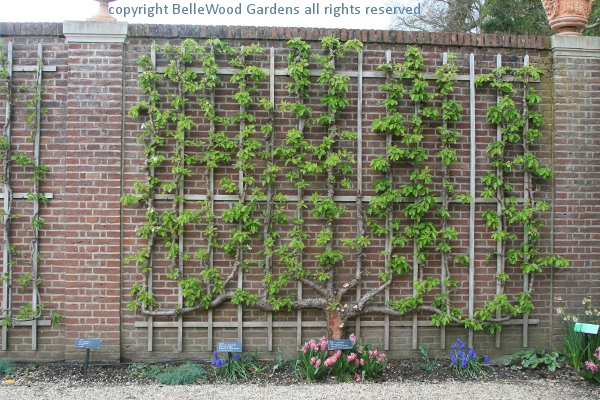
Tuesday, 24 April 2012
Holland in Tulip Time: Palais Het Loo - the plants
Of course, what would a garden be without plants. Not merely the green landscape of hedges and parterres, yews clipped into topiary pyramids, the berceau, and greensward. No, by plants I referring flowering plants. In the days of Stadtholder, the later King Willem and Mary, his Queen, flowers were secondary to the geometry of the garden. Visions of paradise, but a paradise clipped, tweaked, orderly, and well maintained.

An espallier apple tree in the Queen's garden. The wall helped by trapping warmth, encouraging
the flowering / fruiting of more tender fruit trees such as peaches and apricots. Attractive, too.
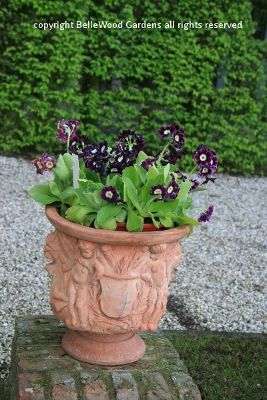
Another fancy was the competitive showing of potted plants.
In the berceau I found a niche with pots of Primula auricula.
An auricula theater, as such stages were called. The plants are
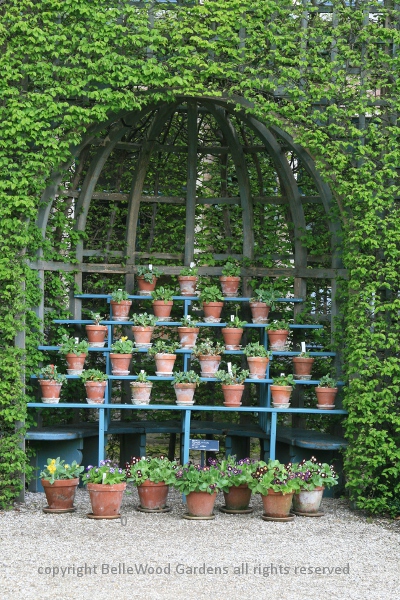
well grown and flowering very nicely. Lovely range of flower colors too,
but the display needs attention to their staging. The pots should be scrubbed
clean of algae and lime deposits. And at some point the plants were rained on,
removing the powdery white farina from their leaves, part of this species appeal.
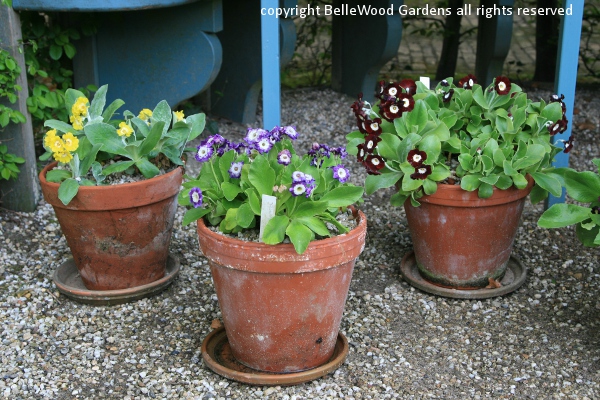
.

A garden such as this needs thorough attention to the details, the minutia of maintenance. I spoke to one young man who was here as a temporary gardener during his school break. But the somewhat damp gardener seen below told me that Palais Het Loo has 90 full time gardeners, each of whom has a section of the parterres. And a weekly rotation to keep them at the peak of perfection.
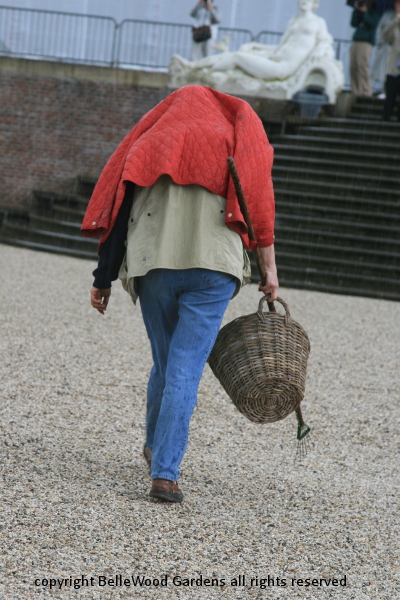
.
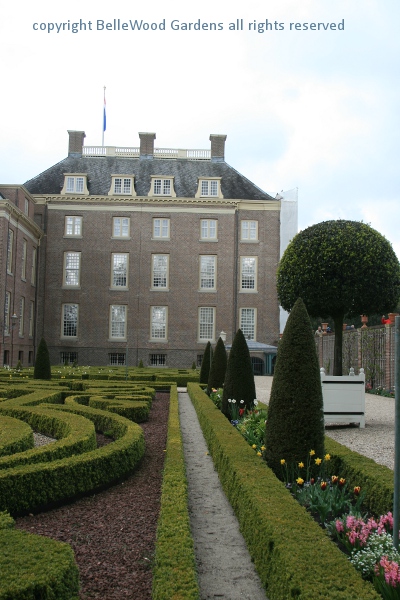
The parterre beds are bordered by plates-bandes, narrow "closed"
boxwood bordered beds that are infilled with flowers. Every parterre
also has its bande-de-propreté, a strip of bare sand whose purpose
is to simplify the removal of trimmings when the hedges are clipped.

Double pink tulips in groups of five, ditto for 'Orange Princess'. Why five?

Remember
that at this time bulbs were rare, scarce in the market, expensive. Five, planted in a quincunx
(one in each corner of a square with the fifth in the center) was quite lavish, for the times. And
I don't know but what our attention is sharpened, focused on these few than with a painterly sweep.

A closer look at Tulipa 'Orange Princess'.
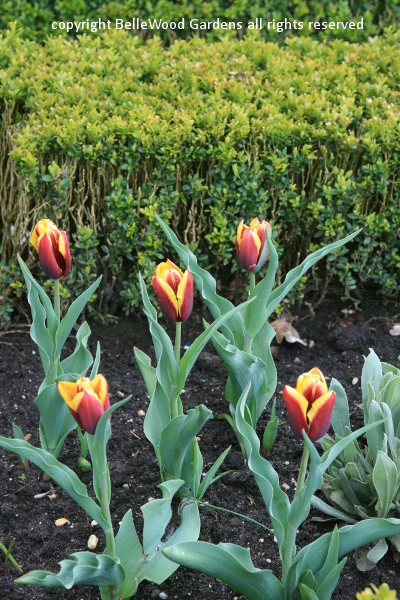
Crisp red tulips with an edging of yellow to each petal.

Crown imperial, Fritillaria imperialis
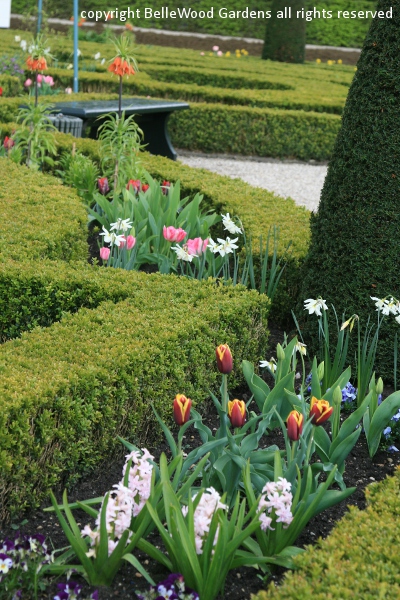
A plates-bandes emphasizing, protecting, displaying its several
quincunx plantings of pink hyacinths, diverse tulips, white daffodils,
and stately crown imperial, one by one, as accents for the presentation.
Tour Comments:Despite the drizzle I'm so glad we had a morning here.